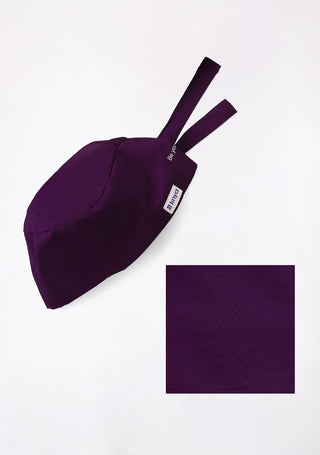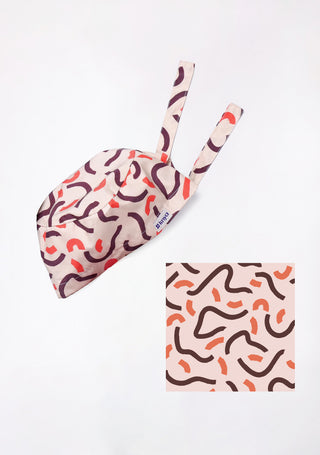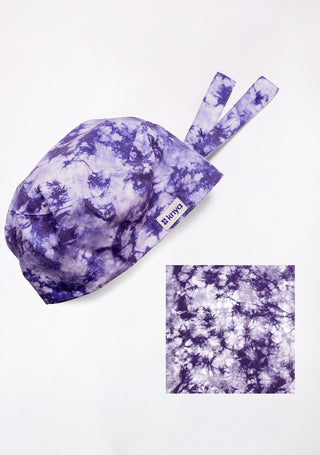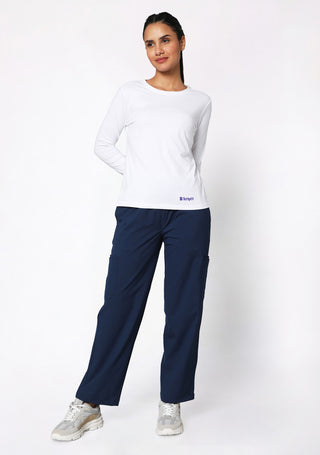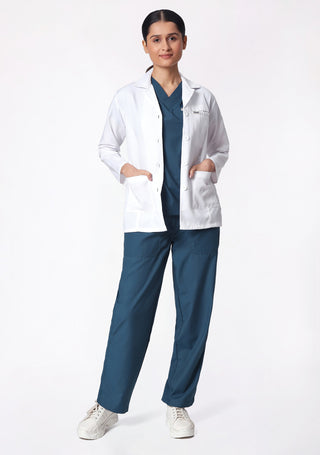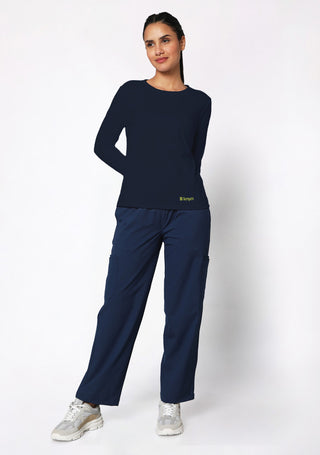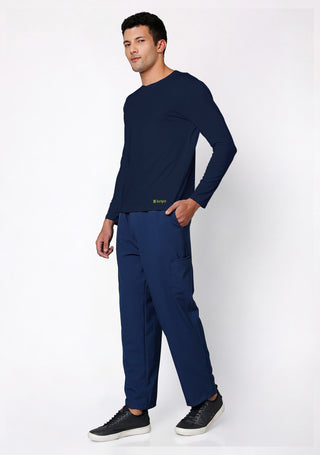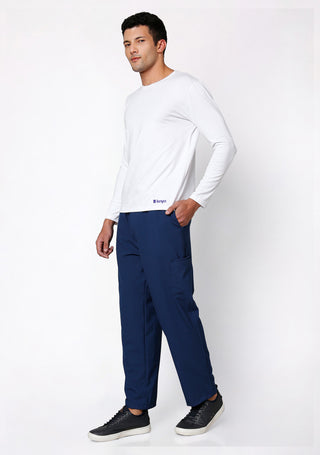In healthcare settings, nurses are often the first point of contact for patients, making their appearance crucial for creating a positive and professional impression. One of the most effective ways hospitals can ensure this is through standardized nurse uniforms. These uniforms are more than just clothing; they play a vital role in promoting professionalism, maintaining hygiene, ensuring safety, and enhancing team unity. In this blog, we’ll explore the reasons why your hospital should invest in standardized nurse uniforms and the significant benefits they bring to both the healthcare providers and the patients they care for.
Check out Navy Blue Scrubs for Mens
Promoting Professionalism and Trust
Nurses are highly regarded for their expertise, compassion, and professionalism. However, their appearance can greatly impact the level of trust and confidence patients place in them. Standardized nurse uniforms, such as medical scrubs, provide a consistent look that helps patients immediately identify their caregivers. This consistency reassures patients, especially in high-stress environments like hospitals, where trust is key to successful treatment.
Moreover, standardized uniforms help foster a professional image for healthcare institutions as a whole. When all nurses are dressed in a similar manner, it reduces any perceived hierarchies or divisions among them, as everyone wears the same attire regardless of rank. This uniformity also promotes a sense of equality, where every team member contributes equally to patient care.
Enhancing Hygiene and Infection Control
Hospitals are places where infections can spread quickly due to the nature of medical procedures and treatments. For this reason, maintaining proper hygiene is paramount for healthcare professionals. Standardized nurse uniforms made from specific fabrics, such as polyester blends, are easier to clean and disinfect, which ensures that nurses are not transmitting harmful bacteria or pathogens.
Additionally, hospitals can implement specific protocols for laundering these uniforms, ensuring that they are washed with the proper detergents and maintained at the highest hygienic standards. This reduces the risk of cross-contamination between patients and healthcare workers. By choosing materials that are resistant to absorbing fluids, like synthetic blends, hospitals can prevent bodily fluids from soaking into the fabric and potentially spreading germs.
Supporting Comfort and Efficiency
Nurses often work long hours on their feet, making comfort a crucial aspect of their daily attire. Standardized uniforms, specifically designed to offer ease of movement, flexibility, and breathability, can significantly contribute to nurse comfort. These uniforms allow nurses to perform their duties without being distracted by discomfort or ill-fitting clothing.
When nurses are comfortable in their attire, they can focus more on patient care and less on adjusting their uniforms or managing discomfort. This increased focus on patient care leads to better outcomes, as nurses can work efficiently and remain energized throughout their shifts.
Safety and Functionality
Standardized nurse uniforms are designed with safety in mind. In medical environments, where exposure to hazardous chemicals, sharp instruments, and other potential dangers is a daily occurrence, uniforms that provide protection are essential. High-quality nurse uniforms are made from durable, tear-resistant fabrics that protect the wearer from cuts, punctures, and splashes.
Moreover, standardized uniforms often include specific design elements such as pockets, allowing nurses to carry essential tools like pens, notepads, and stethoscopes. The functional design of these uniforms enables nurses to work more efficiently, accessing tools and equipment easily without unnecessary interruptions.
Find the best white lab coat here
Promoting Team Unity and Cohesion
A standardized approach to nurse uniforms promotes a sense of belonging and teamwork. When all members of the nursing staff wear the same attire, it fosters a sense of unity and reinforces the importance of collective goals. This sense of cohesion is vital in hospitals where teamwork is essential for providing high-quality patient care.
Additionally, the use of standardized uniforms can create a positive work environment where nurses feel equal, respected, and valued. In such an environment, the collaboration between nursing staff and other healthcare professionals, such as doctors and surgeons, is often more seamless and effective, leading to better patient outcomes.
Improving Patient Perception and Satisfaction
Patient satisfaction is a top priority for hospitals, and the way healthcare workers are perceived can influence how patients feel about their overall experience. Standardized nurse uniforms help patients easily identify who is part of the healthcare team, making them feel more comfortable and cared for. The clean, professional appearance of a nurse’s uniform can also reassure patients that they are in good hands.
In high-pressure or unfamiliar settings like hospitals, patients often feel vulnerable. Knowing that their nurse is easily identifiable and dressed professionally can make them feel more at ease, improving their overall experience.
Cost-Effectiveness for Hospitals
Standardized nurse uniforms can also be cost-effective for hospitals in the long run. By providing nurses with uniforms made from durable, high-quality materials, hospitals can reduce the frequency of replacing worn-out or damaged clothing. Furthermore, when uniforms are standardized, hospitals can negotiate bulk purchasing agreements with suppliers, which often results in cost savings.
For hospitals looking to implement uniform policies, investing in durable and high-performance materials means fewer replacements and longer-lasting attire, ultimately saving money in the long term.
Strengthening Hospital Branding
A hospital’s image is crucial to attracting and retaining patients, and standardized nurse uniforms can be a key part of this branding. Uniforms can be customized with hospital logos, colors, and other brand elements, helping to create a cohesive visual identity for the institution. This branding not only helps with patient recognition but also strengthens the hospital’s position in the healthcare market.
A cohesive visual identity that includes standardized uniforms enhances the professionalism of the entire healthcare facility, making it more appealing to prospective patients and staff members alike.
Conclusion
Standardized nurse uniforms offer far-reaching benefits for hospitals, ranging from improved professionalism and patient trust to enhanced hygiene, comfort, and safety. By investing in high-quality, standardized uniforms, hospitals can support their nurses in providing the best possible care while promoting a positive work environment. The importance of uniforms goes beyond just appearance—they are a crucial component of healthcare that ensures effective, efficient, and safe patient care.

